
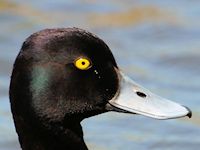 |
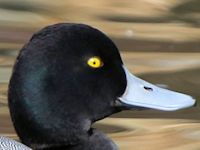 |
 The Lesser Scaup has a bump on the back of the head. The Lesser Scaup has a bump on the back of the head. | |
 The Greater Scaup has a smoothly rounded head. The Greater Scaup has a smoothly rounded head. | |
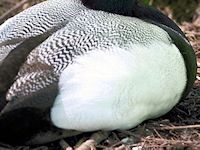 |
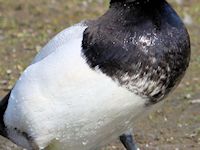 |
 The Lesser Scaup is slightly smaller than the Greater Scaup, otherwise extremely similar. The Lesser Scaup is slightly smaller than the Greater Scaup, otherwise extremely similar. | |
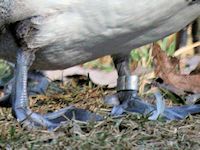 |
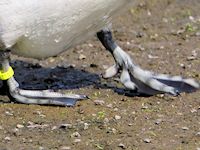 |
 The Lesser Scaup has Greyish Green Legs and Feet. The Lesser Scaup has Greyish Green Legs and Feet. | |
 The Greater scaup has Greyish Blue Legs and Feet. The Greater scaup has Greyish Blue Legs and Feet. | |
| Distinguishing Characteristics | |
| Lesser Scaup | |
 | The Lesser Scaup has a bump on the back of its head. |
 | The Lesser Scaup is smaller than the Greater Scaup. |
| Greater Scaup | |
 | The Greater Scaup has a rounded head. |
 | The Greater Scaup is larger than the Lesser Scaup. |

|

|